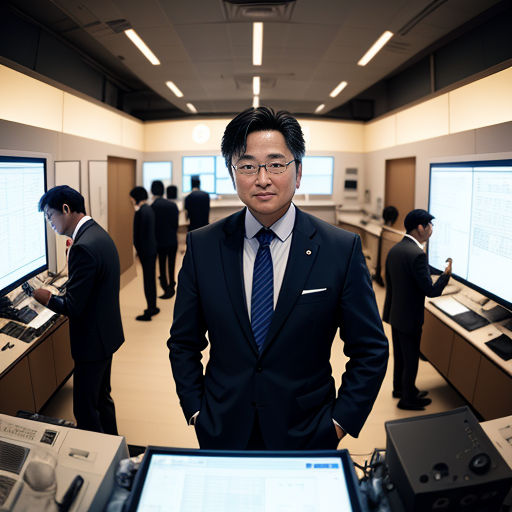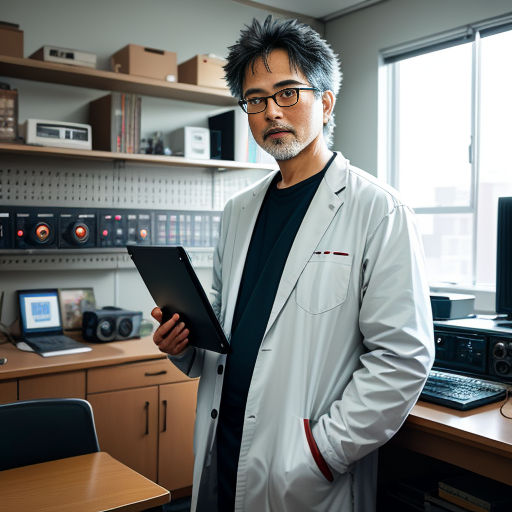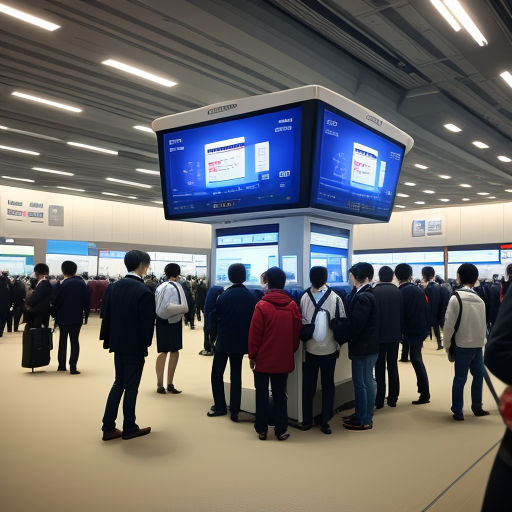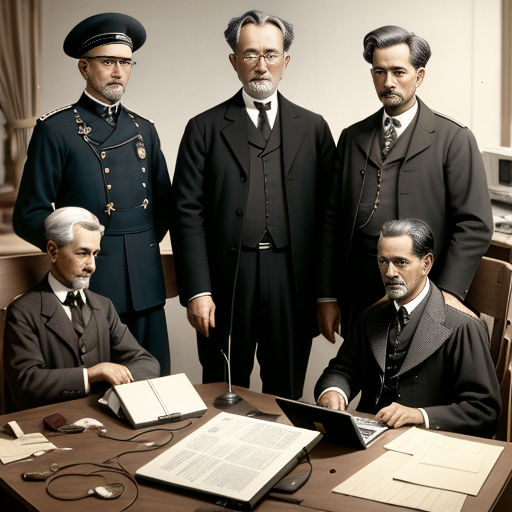
The Pioneers of AV Development in Japan
By Storybird

16 Sep, 2023

The history of AV (Audio Visual) development in Japan is a fascinating narrative that spans multiple decades. Rooted in rich technological innovation and a deep cultural significance, the industry's growth was driven by pioneers who braved the uncertainties and challenges of their time.

It all began after World War II when Japan was gradually rebuilding its economy. Keen to advance technologically, the country turned to the electronics sector, laying the foundation for future AV developments.

$$C_START_1$$ Masaru Ibuka || a middle-aged male with dark hair, wearing a neat suit and a thoughtful expression on his face $$C_END_1$$, an electronics engineer, founded Sony Corporation in 1946.

Ibuka started with a capital of merely ¥190,000 and a small team of enthusiastic engineers. Despite the financial constraints, they dared to dream big.

In 1950, Ibuka's team launched Japan's first tape recorder, the Type-G, marking the beginning of the AV revolution in the country. This marked a pivotal moment in his illustrious career.

The success of the Type-G signaled the potential of the burgeoning AV industry in Japan. Investors and stakeholders paid attention and a wave of innovation followed.

Japan soon emerged as a dominant player in the global electronics industry, thanks to its cutting-edge technology and the relentless pursuit of innovation by its engineers and entrepreneurs.

Another noteworthy pioneer in the AV industry was $$C_START_2$$ Akio Morita || a middle-aged male with grey hair, wearing glasses, a suit, and a warm smile on his face $$C_END_2$$. He co-founded Sony and played a significant role in driving its growth.

Morita's significant contribution was the launch of the world's first transistor radio, the TR-55, produced by Sony in 1955. This gadget revolutionized the listening habits of people worldwide.

The TR-55 made music portable, giving individuals the freedom to listen to their favorite songs anytime, anywhere. This innovation marked a significant breakthrough in AV technology.

The success of the transistor radio led to the rise of Japan's consumer electronics industry, with AV technology high on the agenda for the country's technological innovations.

In 1969, another revolutionary product, the U-matic, the first videocassette recorder (VCR), was introduced by Sony. This development heralded a new era in home entertainment.

The U-matic allowed people to record television programs and watch them at their convenience, further expanding the scope of AV technology. This was yet another landmark for the pioneers of AV development in Japan.

Despite facing fierce competition from other countries, Japanese AV developers continued resiliently, attributing their success to meticulous planning and execution of innovative ideas.

The introduction of the compact disc (CD) by Sony and Philips in 1982, was another turning point. CDs offered superior sound quality and storage capacity, redefining the audio experience.

$$C_START_3$$ Norio Ohga || an elderly man with white hair, wearing a smart suit, and a determined expression on his face $$C_END_3$$, another influential figure at Sony, was instrumental in the development of the CD. He saw the CD as a means to deliver music with unparalleled fidelity.

Ohga's commitment to superior sound quality led to the development of the standard 12 cm disc, which provided a playing time of 74 minutes – enough for Beethoven's Ninth Symphony, his favorite piece.

The next major evolution came with the launch of the DVD in 1996. This format offered even more storage space, enabling the delivery of high-quality video along with audio, shaping the future of home entertainment.

In the 21st century, Japan continued to lead the AV revolution through constant innovation. The development of the Blu-ray disc by Hitachi, LG, Philips, and Sony, was a testament to their ongoing commitment.

The Blu-ray disc garnered worldwide acclaim for its impressive capacity of storing high-definition video and audio, marking yet another milestone in AV development.

The personal lives of these pioneering figures were characterized by their relentless pursuit of innovation. They saw beyond the constraints of their times, and their vision continues to inspire future generations.

A common thread among these AV pioneers was their unwavering dedication to making life better through technology. They worked tirelessly, often at the expense of their personal lives, to bring their innovative ideas to life.

They were not just engineers or entrepreneurs, but visionaries who foresaw the potential of AV technology in enhancing the way we consume entertainment, ultimately shaping our modern lifestyle.

Their passion for innovation contributed to Japan's reputation as a technological powerhouse. Their stories continue to inspire and motivate young minds to pioneer the next wave of technological advancements.

The history of AV development in Japan is a testament to the country's enduring devotion to technological progress. The nation continues to be at the forefront of technology, led by the relentless spirit of its pioneers.

Masaru Ibuka, Akio Morita, and Norio Ohga are just a few names among the many great minds that have shaped the AV industry in Japan. Their influence is felt even today, as Japan continues to be a hub for AV innovation.

Today, the AV development landscape in Japan is as dynamic as ever, with new technologies constantly emerging. These innovations continue the legacy of the early pioneers, shifting the boundaries of what is possible in AV technology.

Even as we marvel at the latest AV technologies, it's essential to pay homage to these trailblazers. Their foresight and dedication have truly transformed the way we perceive and experience the world.

In conclusion, the history of AV development in Japan is a rich tapestry woven from the dedication, passion, and innovative spirit of its pioneers. Their legacy, captured in the countless devices we use daily, continues to inspire and pave the way for future technological advancements.

As we stand on the brink of new technological revolutions, we look back at these pioneers with admiration and gratitude. Their journey serves as a reminder of the power of innovation and the human spirit to overcome challenges and reshape the world.

The story of AV development in Japan is never-ending. It continues to evolve, reflecting the dynamism of the field itself. And at the heart of this story, we find the intrepid pioneers whose determination and vision continue to shape the future of AV technology.

As we look forward to the future of AV development, we are certain that the spirit of innovation and the pursuit of excellence that marked the journey of these pioneers will continue to inspire and guide the path to new technological heights.

In the end, the story of AV development in Japan is a beautiful homage to human creativity and perseverance. It's a remarkable chapter in the book of technological evolution, a narrative that continues to be written with each innovative stride.

So, let's celebrate these pioneers for their extraordinary achievements and contributions. Their names are etched in the annals of AV development, their stories a source of inspiration for future innovators. And as we journey further into the digital age, their work continues to resonate, reminding us of our potential to innovate, create and shape our world.

Let's continue to cherish the legacy of these AV pioneers, for they have shown us that with passion, determination, and innovation, we can push the boundaries of technology, shaping not only our lives but also the trajectory of human evolution.